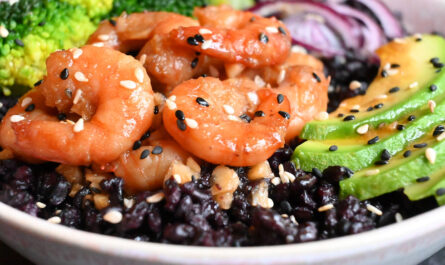Black rice soaking time is a crucial factor when preparing this nutritious grain, especially for sushi enthusiasts. Not only does soaking enhance the texture of the rice, but it also unlocks numerous health benefits. Understanding the ideal soaking time can make a significant difference in your culinary endeavors.

Introduction to Black Rice
Black rice, often referred to as ‘forbidden rice’, is a variety that has been prized for centuries. Known for its rich color and nutty flavor, black rice is packed with antioxidants and nutrients. Sushi lovers have started to embrace this variety, not only for its health benefits but also for its unique taste and visual appeal.
Why Soak Black Rice?
Soaking black rice is essential for several reasons. It helps in reducing cooking time, improving texture, and enhancing flavor. The soaking process allows the grains to absorb water, making them softer and easier to cook. Moreover, soaking can help in breaking down phytic acid, which improves nutrient absorption.
How Long Should You Soak Black Rice?
For optimal results, it is recommended to soak black rice for 6 to 8 hours. This duration ensures that the grains are adequately hydrated and can cook evenly. Some enthusiasts prefer soaking overnight to enhance the grain’s softness and flavor.
Health Benefits of Black Rice
Black rice is a powerhouse of nutrients. It is rich in iron, vitamin E, and antioxidants. Studies have shown that black rice can help in reducing inflammation and may even play a role in cancer prevention. Read more about black rice’s health benefits.
Black Rice in Sushi
Integrating black rice into sushi adds a unique twist to traditional recipes. The nutty flavor and chewy texture complement the fresh ingredients often found in sushi. For those looking to experiment, black rice can be used in various sushi rolls, offering both taste and visual appeal.
Cooking Tips for Black Rice
After soaking, rinse the rice thoroughly and use a 1:2 ratio of rice to water for cooking. Bring it to a boil, then simmer covered for about 30-35 minutes. Let it sit for 10 minutes after cooking to allow the grains to absorb any remaining moisture.
Common Mistakes to Avoid
Avoid over-soaking as it can lead to mushy rice. Ensure the water is at the right temperature during soaking and cooking to prevent the grains from losing their texture.
Incorporating Black Rice in Diet
Besides sushi, black rice can be incorporated into salads, bowls, and even desserts. Its versatility makes it a favorite among health enthusiasts. Learn how to use black rice in a detox diet.
Black Rice and Allergies
While black rice is generally safe, some individuals may experience allergies. It is essential to be aware of any symptoms and consult a healthcare professional if needed. Read more about black rice allergies.

Conclusion: Embrace Black Rice in Your Cooking
Understanding the optimal black rice soaking time is essential for achieving the best results. By soaking, you not only enhance the rice’s flavor and texture but also unlock its nutritional benefits. Whether you’re a sushi lover or a health enthusiast, black rice is a fantastic addition to your culinary repertoire.
FAQs
Q1: Can I eat black rice without soaking?
A: While you can cook black rice without soaking, it may take longer and result in a chewier texture.
Q2: Is black rice suitable for desserts?
A: Yes, black rice can be used in various desserts, including puddings and sweet rice dishes.
Q3: How does black rice compare to white rice in terms of nutrition?
A: Black rice is richer in antioxidants and nutrients compared to white rice, making it a healthier choice.
This article contains affiliate links. We may earn a commission at no extra cost to you.




